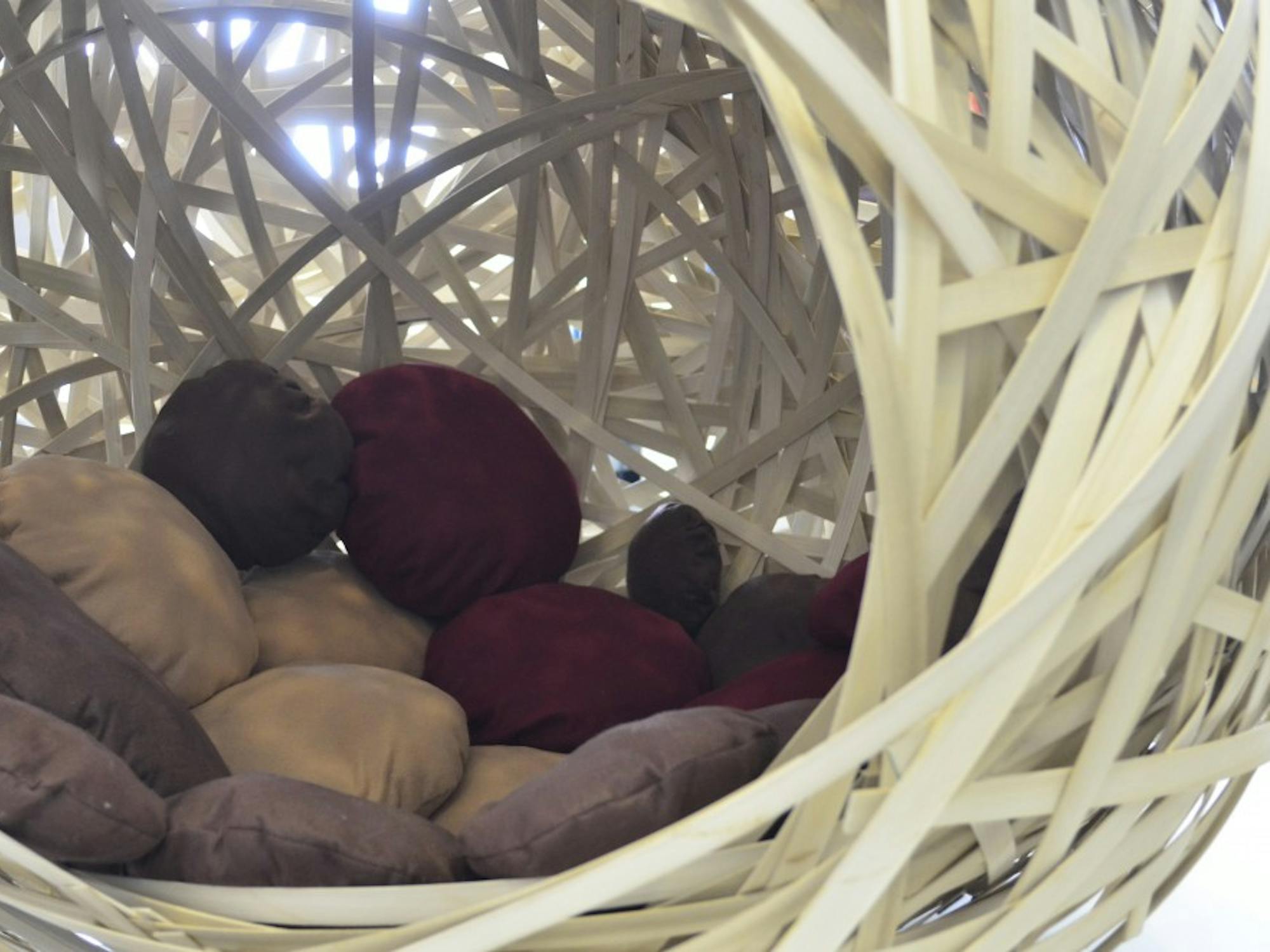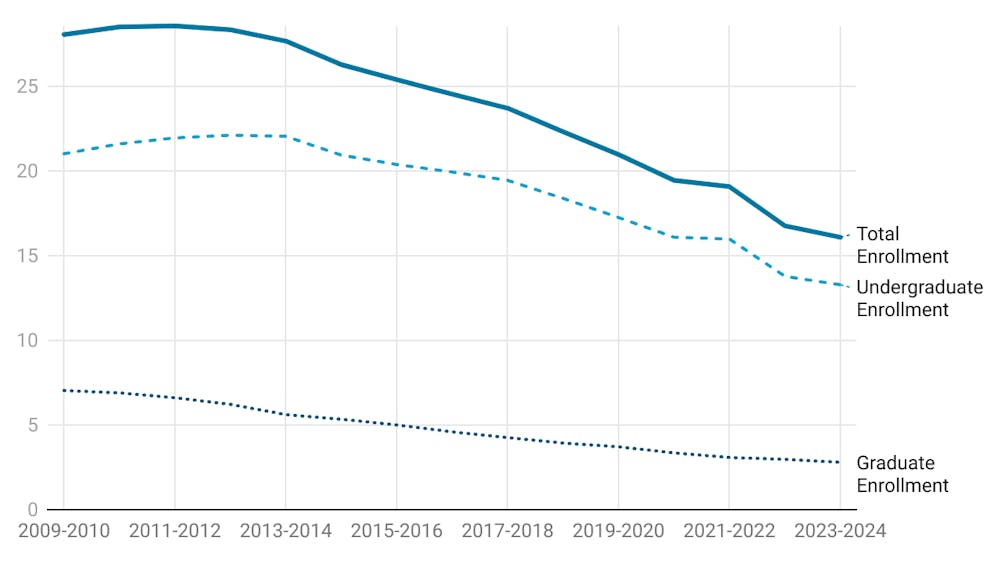The Student Center was teeming with pride on Friday, as students, faculty and proud parents came out in droves to visit Eastern Michigan University’s 33rd annual Undergraduate Symposium.
Celebrating its biggest year yet, the Undergraduate Symposium featured the work of 430 accomplished students, in all academic fields. Oral presentations, poster presentations and a design expo allowed students to showcase the extensive research and creative projects that they
had been working on throughout the year.
The design expo featured diverse projects ranging from architecture and interior design to poster design.
A piece in the design expo titled Green Shelter by Belqes Ali Alemad of the College of Technology, featured a scale model of an eco-friendly emergency shelter, intended for use by people affected by natural disasters. The design incorporated on-site resources to enhance environmental integration, such as solar panels and rain water harvesting systems.
Oral presentations were given in all corners of the Student Center, from the E-Zone Gaming Center to the Student Center Art Gallery and in various rooms throughout the building. The topics varied greatly, even among students in similar fields.
Kate Chapman, a senior elementary education major endorsed by communication, media and theatre arts professor Darlene Leifson, gave a presentation titled An Argument for Integrating Arts into the Schools. Chapman suggested that integrating the arts into curriculum equips students with the skills they need to be successful in today’s workplace.
During her 15-minute presentation, Chapman used case studies and statistics to prove how students of lower socioeconomic status are affected positively throughout the course of their lives when arts have been integrated into their curriculum.
Joshua John Perrin, a senior secondary science major, presented during the same session as Chapman. While he is also going into a field of education, his presentation was quite different.
During his presentation, Investigating the Next Generation Science Standards for Classroom Implementation, Perrin discussed an inquiry-based lesson plan that he created to teach photosynthesis to middle school students using the education reform standards outlined by the NGSS.
“I wanted them to use examples and information based on what they see outside of the classroom,” Perrin said.
Perrin, who will be entering the teaching workforce within the next couple years, also reflected upon how “doing this research project has helped to shape my science teaching identity.”
In a less formal method of presentation, posters were set up in room 310 A and B of the Student Center. Two sessions were held in which students stood near their poster, explaining their research to interested onlookers.
Jesica Rubio, a junior biology major, worked with her partner, Jessica Twydell, on their project, Temperature Preference in Emperor Scorpions (pandinus imperator).
“We realized that there were not a lot of ecological studies on scorpions and we wanted to work with them,” Rubio said. She and Twydell developed a research project to determine optimal temperatures for scorpions and the impact of temperature on group living.
From September 2012 to the beginning of March 2013, Rubio and Twydell conducted several tests with emperor scorpions using a thermal gradient. They measured the body temperature of individual scorpions versus that of those in a group setting and found a significantly lower body temperature in the individual scorpions.
“It was a very time consuming project,” Rubio said. “We were in here during winter break and spring break, pretty much whenever there was a break.”
Since Rubio is a junior, she plans on continuing her work with the scorpions.
“We want to run the trial again just to make sure it’s consistent,” she said.
Rubio also has plans to enter work in next year’s Undergraduate Symposium.
“It’s a really great experience working with others, and someone can use this information in the future,” she said.
Another biology major, senior Asani Palamaru, entered work in the Undergraduate Symposium for her second year in a row. Palamaru worked with her partner Rachael Vasquez on the project,
Characterization of Coaggregation Between Probiotic Gut Bacteria.
“Basically we are looking at how bacteria interact with eachother, specifically probiotics,” Palamaru said. “Probiotics are really important to the human body and knowing how bacteria interact with one another can help with things like making medicine.”
Palamaru, who aspires to be a dentist, said that being a part of the symposium will help with her career.
“It shows that I can communicate with others and work in an academic setting,” she said. “We did this with our own initiative.”
The Undergraduate Symposium offers students a chance to build their portfolios and résumés with faculty-endorsed, extensive work. With an ever growing number of successful students eager to present their work, the Undergraduate Symposium only stands to grow bigger and bigger each year.










